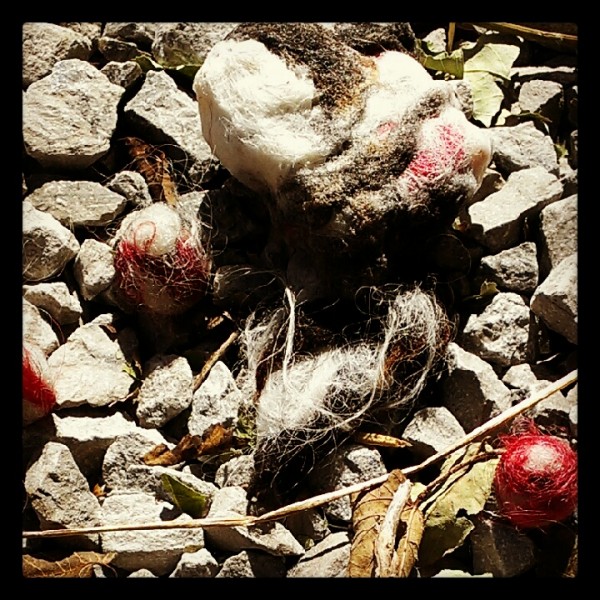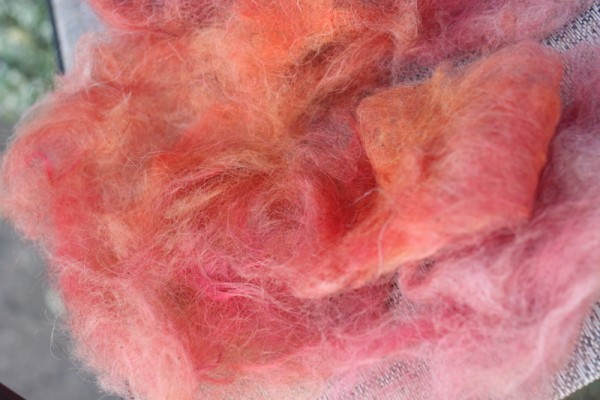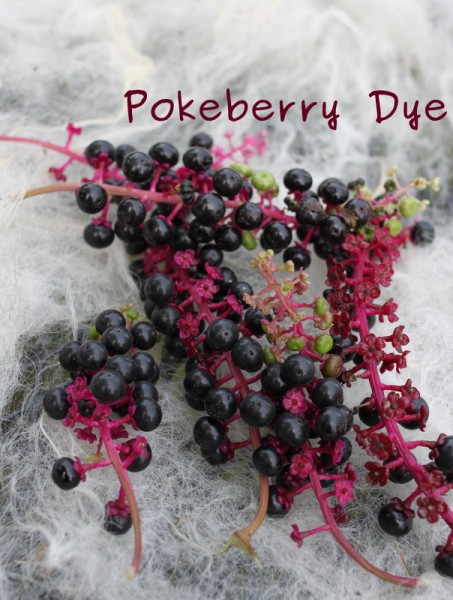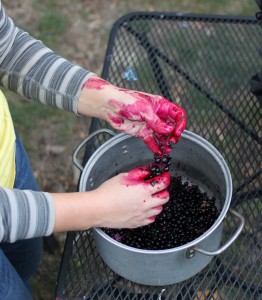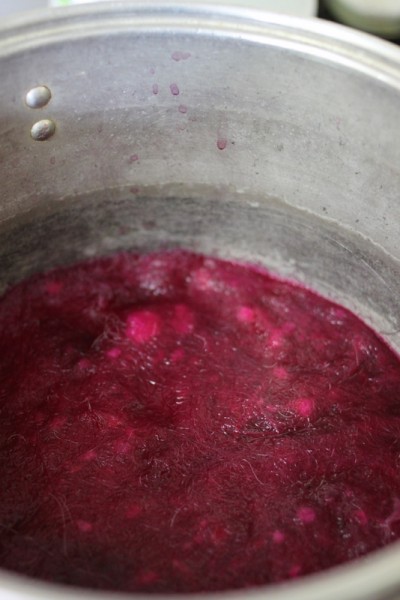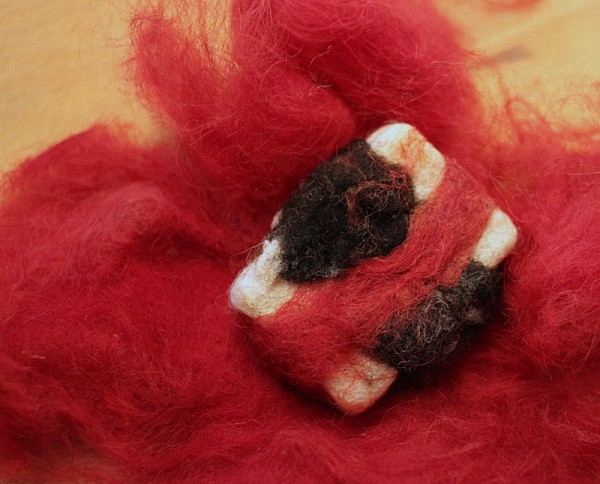For the last three Mondays, Lil and I explored wool with five children aged five and up and several adults. In a new class format I'm calling Homestead Studio, we use what we know and wonder about to guide open-ended exploration. Books help fill in the stories we can't experience in an hour-long session.
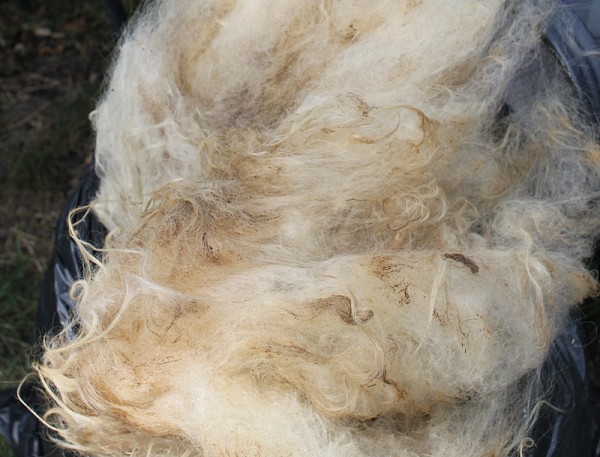
Week One: Washing & Carding
During our first meeting, we met our wool: raw Navajo-Churro fleece from Cota Farms. The fiber was primarily white with some dark sections. Touching the raw wool left our hands softened (and a little smelly) from the lanolin.
To remove the ample dirt (poop) and plant material, we washed the wool. Cleaning wool is tricky - too much agitation and you'll end up with felt instead of fiber. We soaked the dirty wool in warm water with Dawn soap inside a mesh bag. An amazing amount of soiled material streamed from the wool into the water. After a long soak, we moved the mesh bag to a bucket of warm clear water for a rinse. Then we removed from the bag and let it dry in the sun.
Next, we picked remaining plant material out of the clean dry fibers. We aligned the fibers with carding combs. Using the combs was difficult for some of the children because it requires coordination and a fair amount of strength.
We ended the class with a walk through the neighborhood looking for pokeweed. At home, I made dye from the pokeberry fruits.
The picture book for the day was Farmer Brown Shears His Sheep: A Yarn About Wool. The kids loved this silly cartoon-illustrated story of a farmer who makes knitted sweaters for his sheep.
Week Two: Felting
I presented pokeberry scarlet, natural black, and natural white wool for felting during our second session. Each participant had a small plastic container filled with warm water and a little soap. They wet and rubbed a small piece of white wool to create a mat or ball, adding wool to make the piece larger. Some chose to add color details on outer layers; some felted around plastic balls to later cut open for bowls.
After everyone had some experience felting, I offered bars of locally-made soap. When a bar is covered with felt, the wool provides pleasing color, an exfoliating texture, and an easy way to grip the slippery soap. Participants of every age enjoyed felting.
Weaving the Rainbow concluded our felting day. Soft, detailed watercolor illustrations tell the story of an artist using dyed wool to weave and felt a landscape wall hanging in this book.
Week Three: Weaving
Finally we made our way closer to a sweater, what most kids said they wanted to make at the beginning of the Studio series. We made fabric from wool.
Lil showed the others how to finger knit. This required too much coordination for some of the group but others completed a small rectangle of knitted fabric.
I made available two looms: a plastic, craft store version and a homemade cardboard box loom with a cardboard shed. The plastic loom used a long dulled needle to weave and the cardboard box used shuttles. Everyone tried both looms and realized quickly why hand-woven garments are so expensive - we barely created four inches of fabric in the whole class.
A few kids tried branch weaving. We wrapped wool horizontally across a v-shaped tree branch for the warp and used needles to pull yarn through as weft. These came out a little funky but I love the haphazard natural look.
We finished the class with Charlie Needs a Cloak by Tomie de Paola. Young shepherd Charlie shears a fleece, dyes the wool with pokeberries, spins yarn and weaves himself a new coat with a meddling sheep companion.
Join Homestead Studio!
The next Homestead Studio will be Mondays November 12-26 from 2-3 pm at City Folk's Farm Shop. We'll make home goods like cleaners, bath and body products, and candles from all-natural materials and scents. The projects are geared to appeal to children ages five and older and adults alike. Register on the Homestead Studio page.

